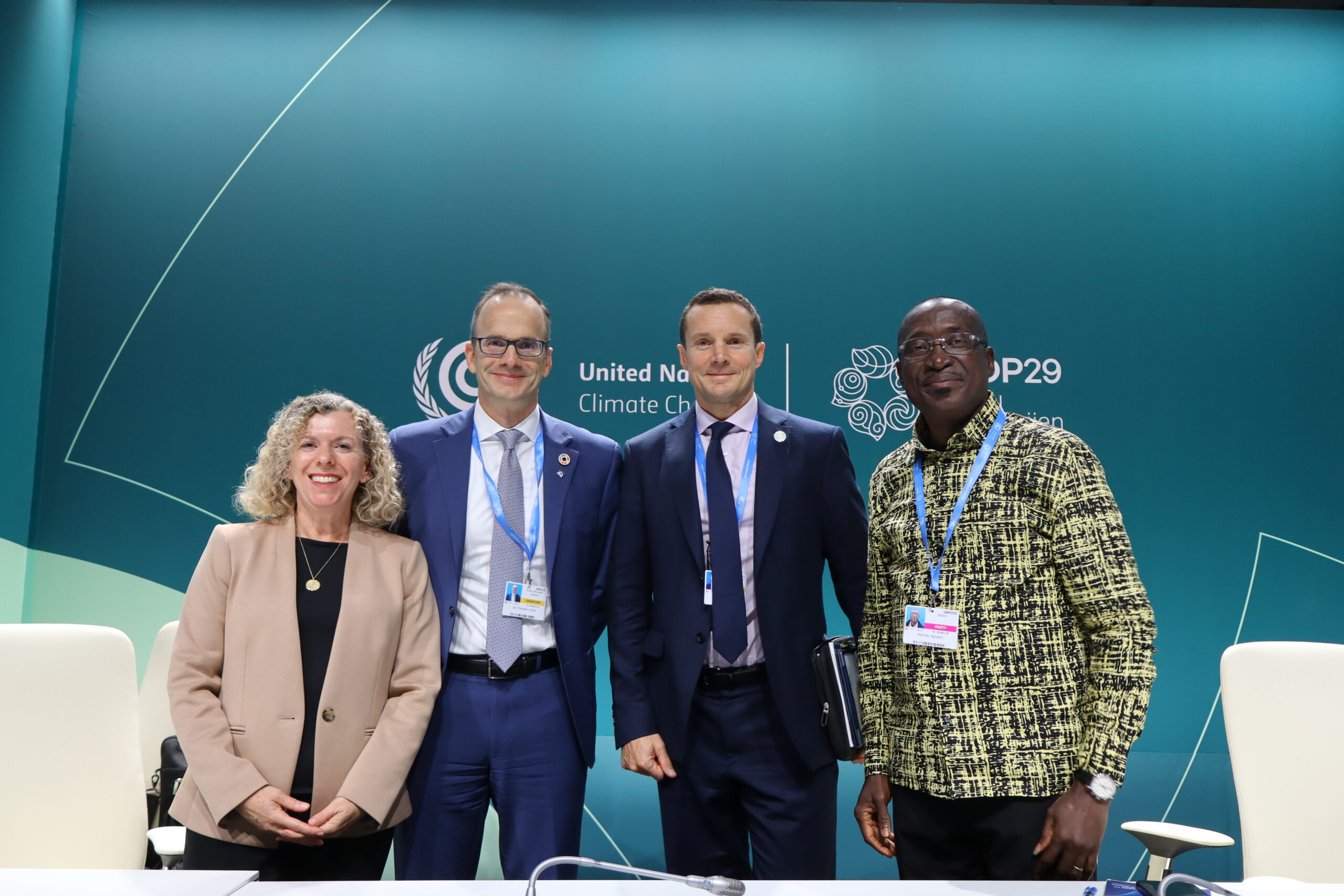The potential for energy efficiency remains vast and largely untapped – but we are not on track to meet the COP 28 outcome’s goal of doubling the global average annual rate of energy efficiency improvements by 2030. The global community achieved only 2% efficiency gain last year, and even less improvement is expected this year. Investment in energy efficiency must triple by 2030 to fully implement the “double down” target.
To raise the priority of this critical issue, a global coalition of international organizations, civil society, private sector, industry, and finance organizations, anchored by Mission Efficiency, came together in unified support to champion energy efficiency as a cornerstone of the energy transition.
Speakers included:
- Kofi Agyarko, Director, Renewable Energy and Energy Efficiency, Energy Commission of Ghana
- Jon Creyts, CEO, RMI
- Bruce Douglas, CEO, Global Renewables Alliance
- Lisa Jacobson, President, BCSE
- Moderator: Dina Cappiello, Chief Communications Officer, RMI
Key takeaways:
Lisa Jacobson (BCSE): Mission Efficiency calls on countries to translate the UAE Consensus into their national commitments before COP 30. The coalition also calls on the financial community to ramp up investments toward doubling global energy efficiency improvement – and on the COP Troika to lead the way to stronger action.
Bruce Douglas (GRA): The combination of energy efficiency and renewable energy is the fastest and most cost-effective way to transition to a clean energy economy. The goal to double EE improvement is vital, especially in emerging markets. It’s time for action: country’s updated nationally-determined commitments (NDCs) must translate global commitments into national ambitions and include specific EE and renewable energy goals, as well as detailed energy plans that can guide investments.
Kofi Agyarko (Ghana Energy Commission): It is cheaper to conserve energy than to continue expanding capacity. This is why Ghana is focused on energy efficiency improvements. Ghana has incorporated EE in the country’s NDCs and is currently revising its NDC to include more energy-efficient appliances. The country has also invested with Mandatory Energy Performance Standards (MEPS). EE is the secret turbine that powers clean energy at a cheaper cost. More campaigns are needed to communicate the benefits of efficiency.
Jon Creyts (RMI): Doubling the pace of energy efficiency by 2030 is missing from NDCs, which is a significant oversight. EE is the most important lever not being pulled right now. It will make the entire energy transition cheaper, faster, fair and more secure. In emerging markets, applying efficiency alone could save one third of new demand by 2035. From a productivity perspective, it will support a 50% increase on appliance penetration on equivalent grid infrastructure.
Call to Action:
Recognizing the pressing need to enhance energy efficiency to support climate targets, Mission Efficiency is launching a Call to Action on energy efficiency at COP 29. As a supporter, BCSE encourages other organizations and businesses to sign on to prioritize energy efficiency investments in reducing emissions, improving resilience, and lowering energy costs worldwide.
The full text of the Call to Action is available here. Click here to sign on.
DETAILS

